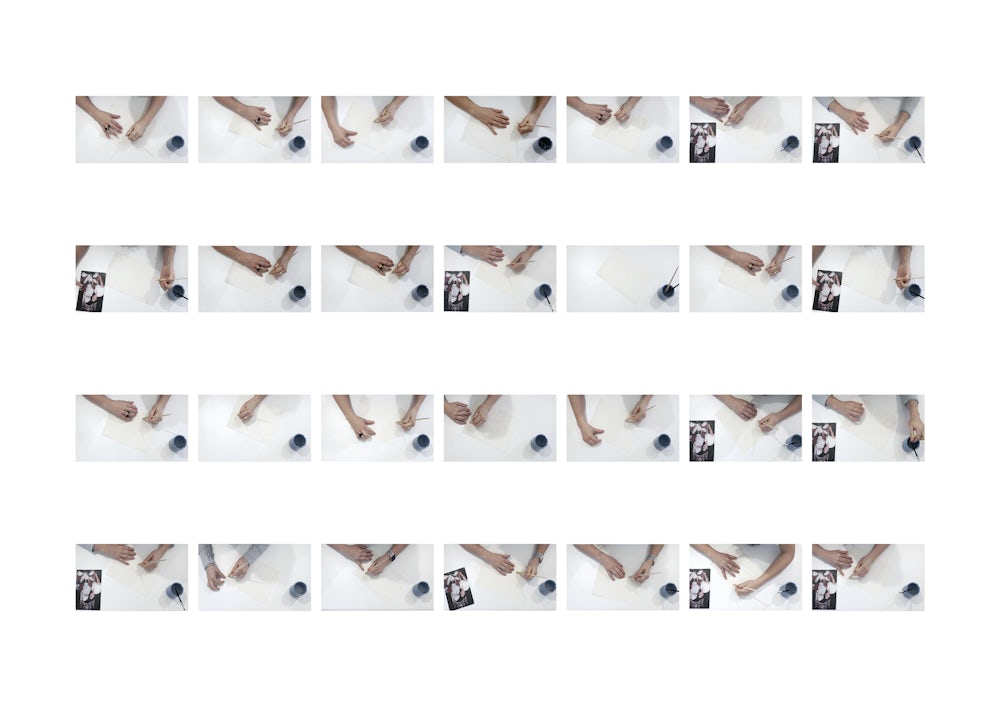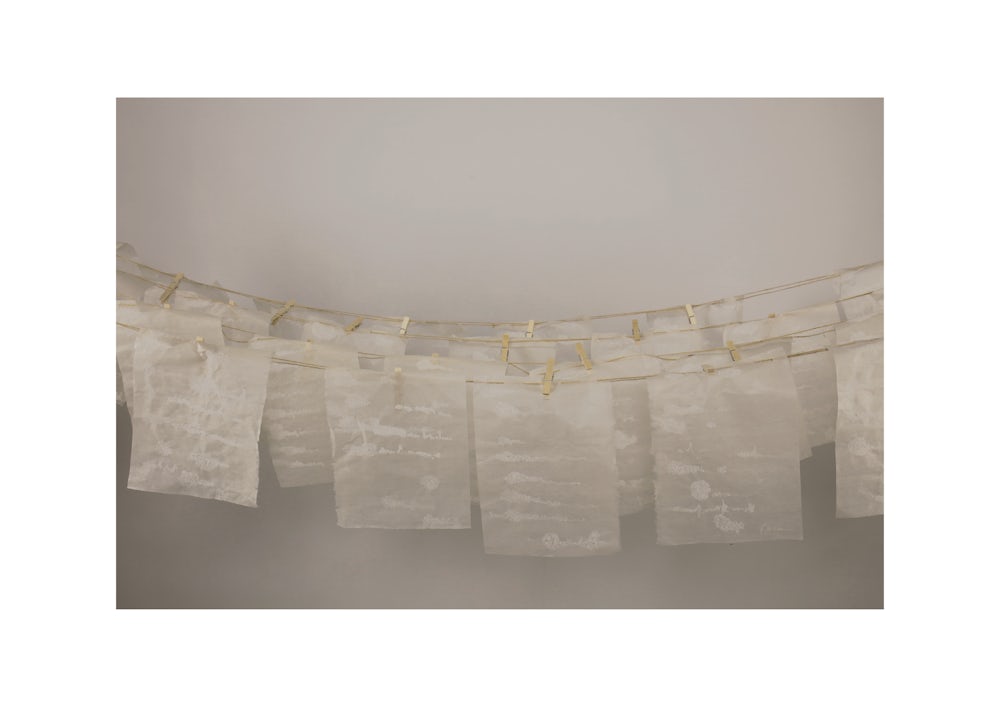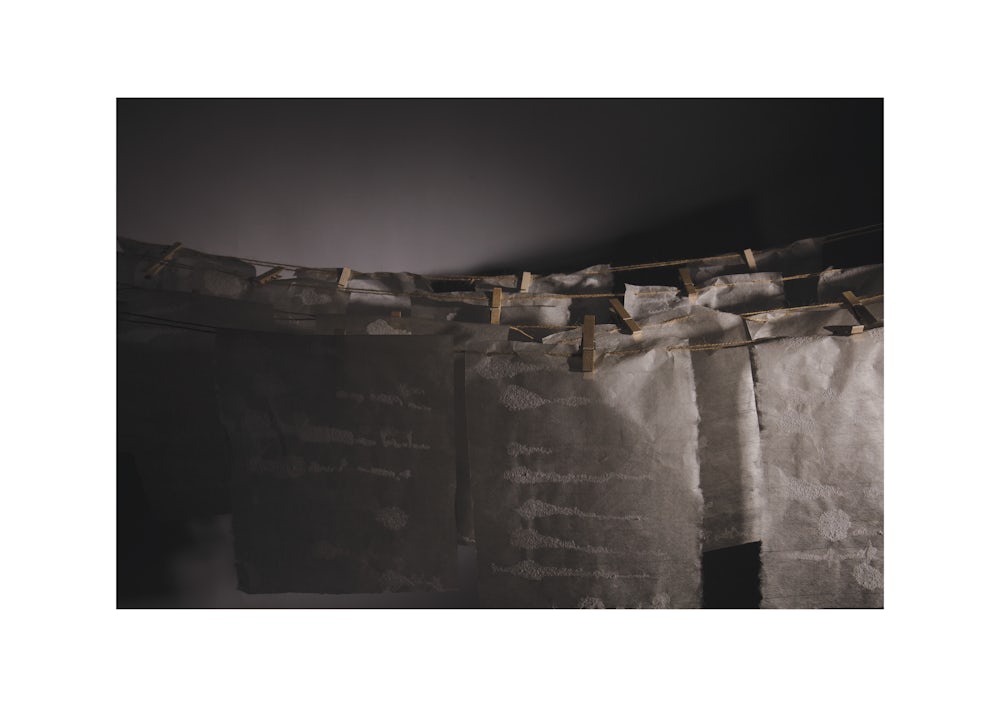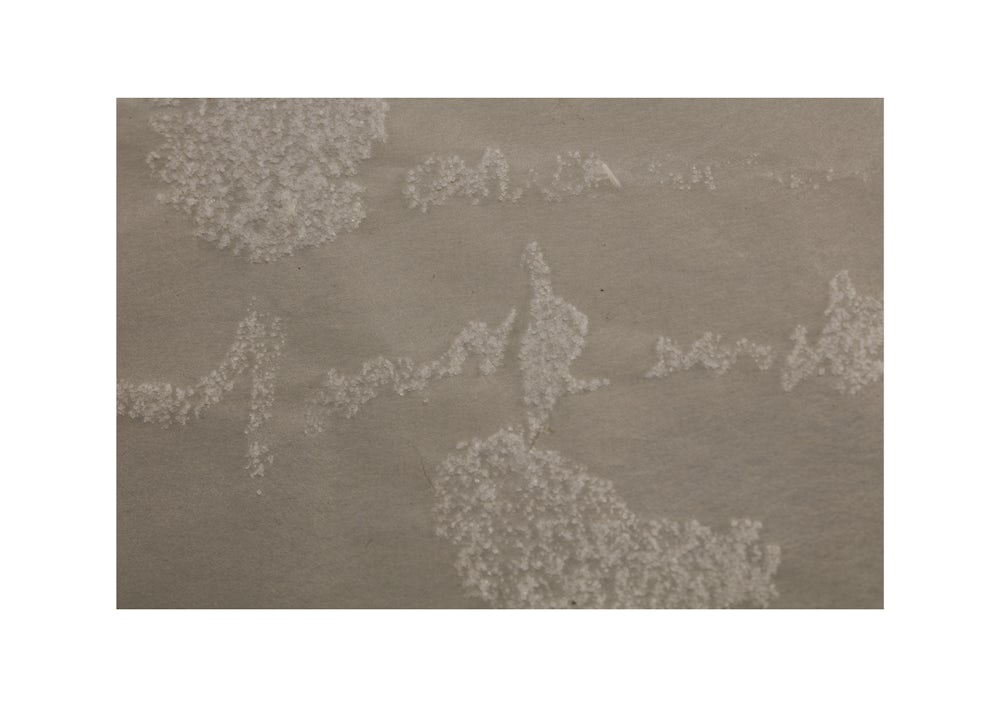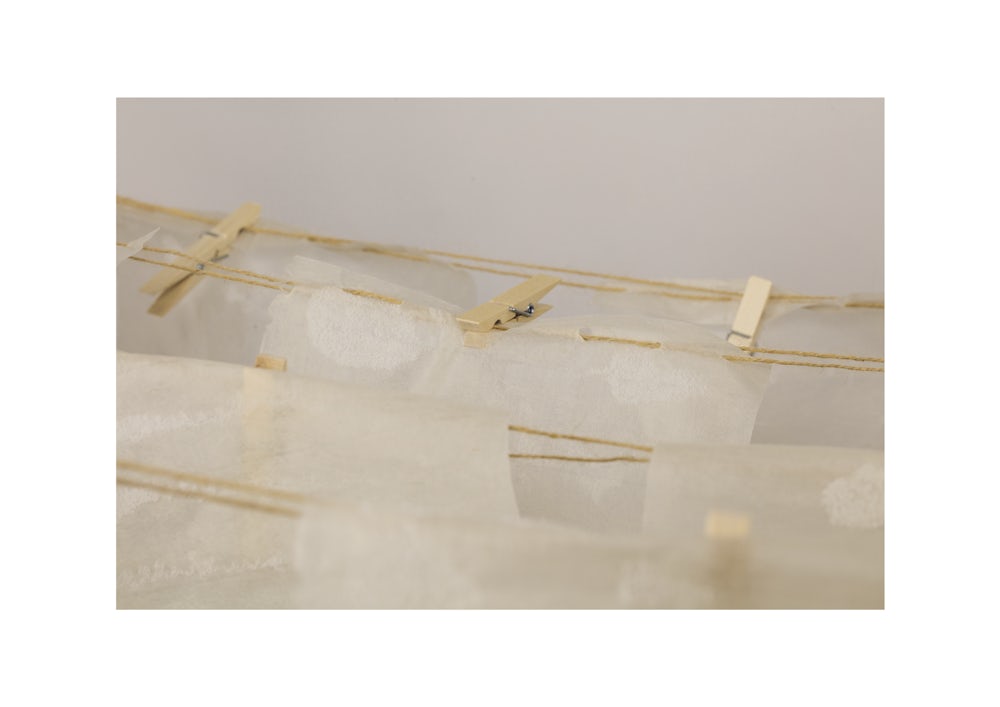My Media Studies project was inspired from my personal experience of mourning my mother’s death and acknowledging her physical loss. In the process of recalling her existence, I realised that I was thinking about her tangibly and not about her essence. I pictured her physicality but not her features, her clothes but not her movements. My mother’s aura cannot be recreated, no object or photograph will ever represent her being. 1 Due to my cultural heritage from Ecuador, I have attempted to display the intangible presence of my mother through the domesticity of daily life.
To proceed with my project, I imagined a fictional character called Mneme. Mneme has the ability to materialise memories. She transforms my personal memory into a language. Mneme focuses on understanding different forms of distortion and false perspective related to collective recollection. When she is inspired, she collects events and reconstructs them as a new reality where personal experiences, culture and time overlap.
Do we collect memories? How are they retained? Memory and false perspective are a process of collective and individually storing knowledge.2As a human characteristic, memory is addressed as a fragile and intangible aspect of society where distortion is inevitable and dependent on the person. 3 To mediate memory is to revisit something which cannot be recovered, and it depends on the observer’s point of view.
In order to reconstruct and materialise these memories, I create an object. For twenty-eight consecutive days, my intimate thoughts have been documented in the form of letters. Written with water and salt on handmade white paper, the object is meant to dry and leave behind only scratches and stains. The white paper resembles the idea of a blank slate as a representation of memory not existing before the individual. Nonetheless, the watermarks suggest the notion of distortion over time. As a result, the empty letters are meant to be a memory aid, like a blank POST-IT that can be used as a cue to help us remember.
The object itself is the result of papers threaded together with Cabuya (Ecuadorian organic fiber) and displayed as a hanging clothesline. In this way, my project revisits memory transforming it into a tangible, yet abstract object.



